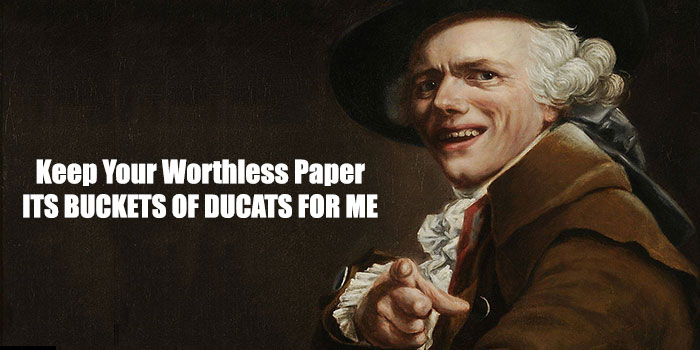
By Tyler Rossi for CoinWeek …..
As modern-day hieroglyphics, memes are a distinctive visual language full of inside jokes and social commentary. By studying these pictural snapshots we can glean a deeper understanding of the social group which produced them.
First off, what is a meme?
Pronounced “MEEM” (Blackmore, 65), these “pieces of visual media culture” (Huntington, 1) defy easy explanation, intuitive as they may be to savvy consumers of digital media. Richard Dawkins, who first compared memes to human genes, says they are a vehicle for cultural transmission, ascribing to memes much more importance than just humorous images of cats. The term is derived from both the ancient Greek word mimeme and the French word mime, both of which allude to an act of imitation (Atran, 352). And by transferring discrete packets of information, memes are part of both us and our society. While genes carry the proteins that create DNA and all of humanity’s genetic makeup, memes are visual representations of pop culture and simultaneously a vehicle for social critique. In fact, “minds are built for memes as bodies are built for genes” (Atran, 355).
Interestingly Frank Holt, an archeologist and resident scholar at the University of Houston, took another step down the gene-meme path and compared coins to memes. Similar to the paintings of Joseph Ducreux (as seen above) and an anonymous scholar (pictured below), which have become memes in and of themselves, without the need for captions, Holt posited that a “coin itself can be a meme” (Holt, 33).
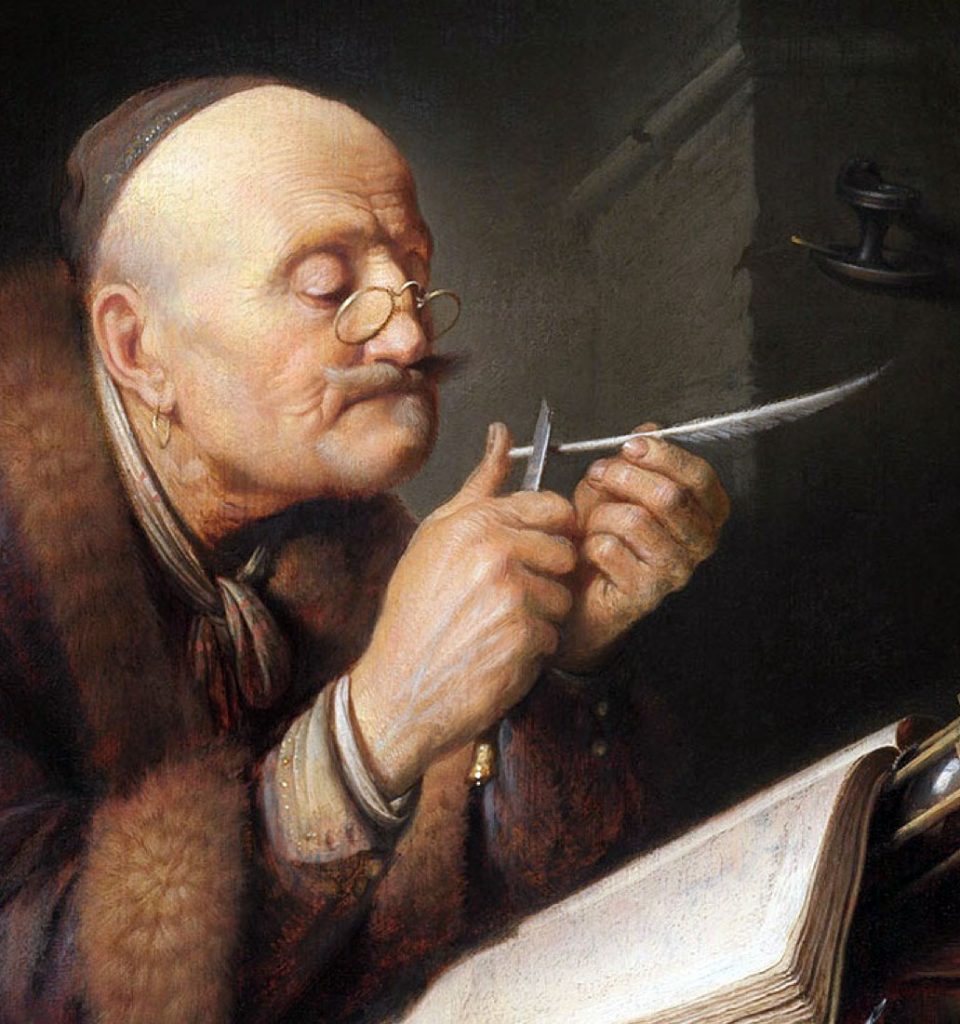
The author describes how coin types can “inherit”, or replicate, imagery from earlier mintages.
For example, the famous archaic Athenian ‘owl’ tetradrachm is recognizable when compared to a later specimen from 450 BCE, which will look even more similar to one from 460 BCE. Then, like many biological genetic descendants, the “New Style” Athenian tetradrachm minted almost three centuries later shows “similar features”, but with new characteristics traceable to outside influences such as a broader flan, a wreath border, and additional symbology (Holt, 29). While the designs may morph over time, they generally follow the evangelist’s maxim on the Word of God: “Spread, but dare not alter” (Atran, 353). As the coin evolves, and new issues are struck, the underlying message is faithfully replicated despite superficial alterations.
While the theory that a coin may be considered a meme is fascinating, this application is academic and generally esoteric. What is more pertinent to the topic of numismatic memes is the appropriation of external cultural imagery that is then overlayed with numismatic messaging. The most interesting examples pick up on themes that members of the numismatic community will recognize: the price of coins, the general lack of outside interest in numismatics, and the relationship between a numismatist and their spouse.

This first meme demonstrates a common joke among numismatists and plays off the New Testament notion of “if you give a man a fish, he will eat for a day. But if you teach him to fish, he will never be hungry”. By turning the concept on its head, this satirical meme pokes fun at both the high cost that many numismatists pay for coins and the very real drive to collect.

This next meme, which depicts a costumed grim reaper figure talking with a passing individual, reveals another semi-comedic numismatic topic: How much do you tell your spouse about the cost of your hobby? What is their reaction to additional purchases? This meme is similar to others that comment on how many beers the reader drank, or how much money was spent on a random item uncovering real tension in a relationship in comedic fashion. It also reveals a common situation that many numismatists can relate to and a common issue over which they can bond.
Memes are visual representations of a characteristic or topic pertinent to a certain group and gain popularity by “parodying, mimicking, and recycling” social critiques of that group (Huntington, 1). Numismatic memes are no different.
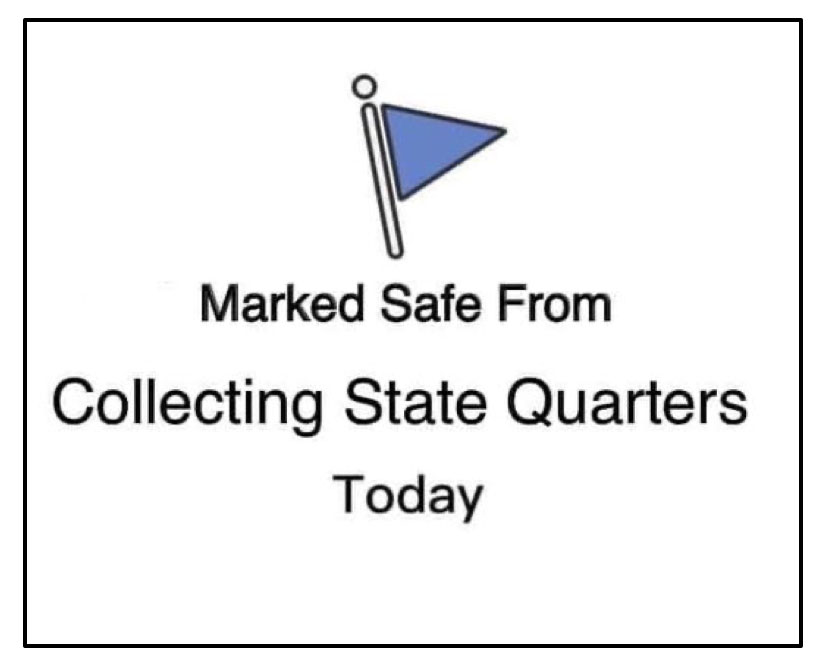
There are general numismatic memes, which all coin collectors will appreciate, and there are also those that only a specialist will understand. For example, the meme above pokes fun at both the safety marker that Facebook created in response to the various natural and man-made disasters in the past decade and the 50 State Quarters series. While the State Quarters series is still popular with collectors to this day, its expansion to the America the Beautiful series, which depicts the national parks and monuments–in addition to the “W” mintmark, 5oz bullion versions, and various finishes–has seen a rapid proliferation of design changes that may have created “collector fatigue” (Heller).
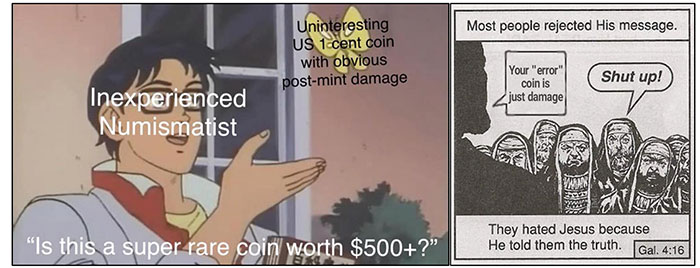
Two examples of another numismatic meme type, relatable mainly to collectors who focus on modern issues, can be seen below. These are distinctly different from the numismatic memes previously mentioned because they begin to have a much narrower audience. In the various online Facebook groups and coin forums, it is not uncommon for new numismatists and other less scrupulous individuals to over-value coins with post-mint damage by labeling them as error coins. While sometimes an honest mistake, it’s a mistake made often enough that most numismatists can relate.
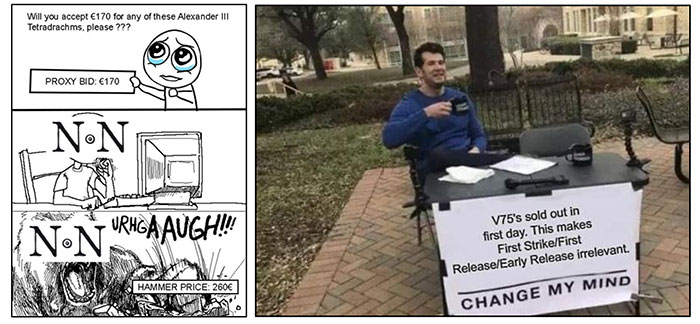
Memes often keep abreast of numismatic news and can offer topical jokes about recent events. The example above, which depicts the right-wing political commentator Steven Crowder, reflects on the recently released 2020-W American Gold Eagle with the “V75” privy mark. With a mintage of only 1,945 (an homage to the end of World War II), demand far outstripped supply and these coins sold out within minutes of their release. Less than two weeks after being released, the coins were selling for $15,000 to $20,000. The United States Mint website also suffered technical issues that impacted early sales, causing much irritation. Additionally, the meme touches on the controversial topic of “first strike/early release/first release” coins. Since usually, the only two ways to prove that a coin actually falls into these categories are mint packaging or third-party labels, they are sometimes viewed by collectors as a gimmicky value-added proposition.
Fans of ancient coins are not without their own memes. Another meme that serves as a vehicle for complaint focuses on how prices for common coins can be highly inflated during an auction, as a result of both over-excited bidders and auction fees. For example, the meme to the right is a commentary on how auction prices can be inflated and uses the Munich-based online auction house Numismatik Naumann as an example.
Lastly, a very interesting and illuminating thing occurred while I was collecting memes for this article.

Someone sent me a highly focused meme that used the History Channel “alien” meme format to highlight a particular collector and dealer in ancient coins who focuses on high-grade silver tetradrachms. Due to the limited appeal of this meme (it was, after all, an inside joke few people would have understood), I initially decided to not include it. In a testament to how memes evolve to satirize current events, however, when the meme’s author learned that I didn’t intend to use his meme, he proceeded to make another meme of me rejecting the original meme. This creative cycle is the very reason memes are important and while “[w]e are built as gene machines”, memes help expand our cultural and societal viewpoints (Dennett, 133).
* * *
Sources
Atran, Scott. “The Trouble with Memes: Inference versus Imitation in Cultural Creation”, Human Nature 12 (4): 351–81. 2001.
Blackmore, Susan. “The Power of Memes”, Scientific American 283 (4): 64–73. 2000.
Dennett, Daniel C. “Memes and the Exploitation of Imagination”, The Journal of Aesthetics and Art Criticism 48 (2): 127. 1990.
Heller, Pat. “Quarters Sag after State Issues”, Numismatic News (blog). November 30, 2017.
Holt, Frank L. Neo-Darwinian Numismatics: A Thought Experiment. 2016.
Huntington, Heidi. “Subversive Memes: Internet Memes as a Form of Visual Rhetoric”, AoIR Selected Papers of Internet Research 3: 1–4. 2013.
* * *
About the Author
Tyler Rossi is currently a graduate student at Brandeis University’s Heller School of Social Policy and Management and studies Sustainable International Development and Conflict Resolution. Before graduating from American University in Washington D.C., he worked for Save the Children creating and running international development projects. Recently, Tyler returned to the US from living abroad in the Republic of North Macedonia, where he served as a Peace Corps volunteer for three years. Tyler is an avid numismatist and for over a decade has cultivated a deep interest in pre-modern and ancient coinage from around the world. He is a member of the American Numismatic Association (ANA).




